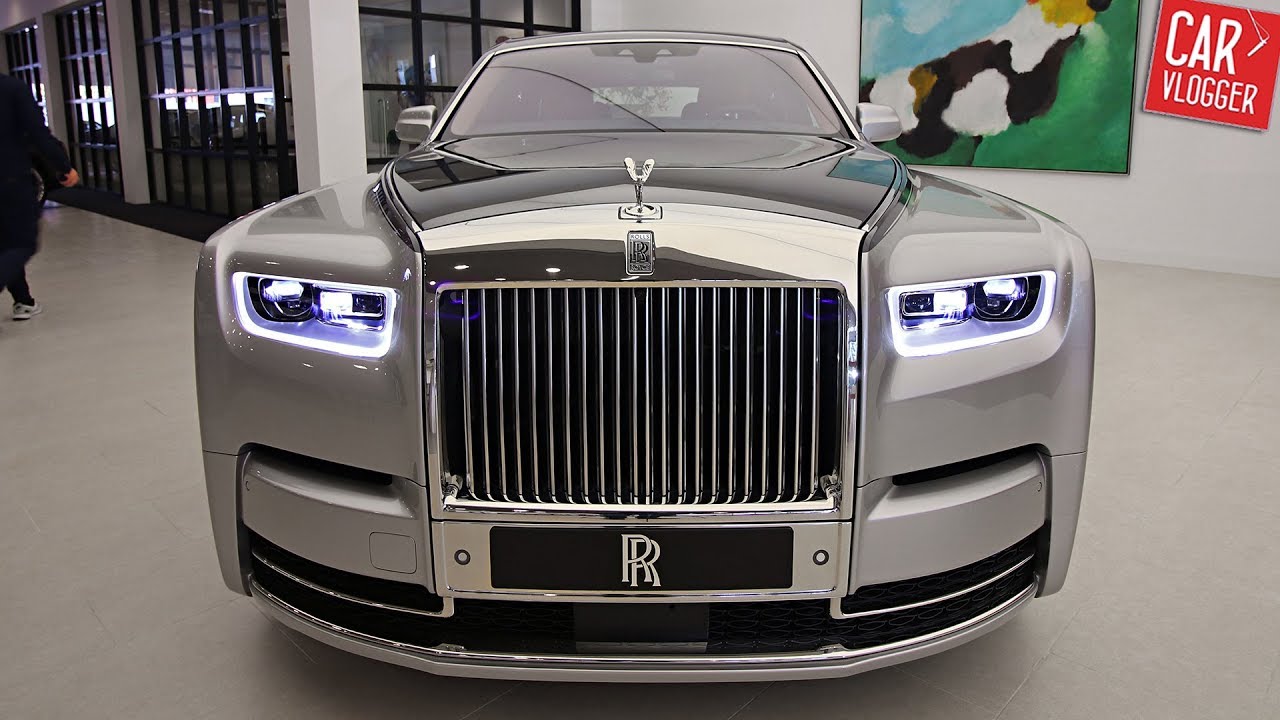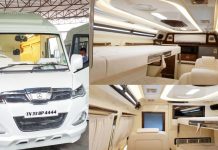2018 Rolls-Royce Phantom: The Eighth Generation of Ultimate Luxury
New versions of the Rolls-Royce Phantom don’t appear often, so the company can be forgiven for making what the British would describe as “a bit of a fuss” when they do. The original Phantom was introduced in 1925, and Rolls claims that makes it the longest-lived model name in automotive history. In truth, there have been some lengthy gaps between a few of the generations, but this new eighth generation is directly replacing the current car, which was the first BMW-developed Rolls-Royce. This, we remind you, is a car for people who regard the Bentley Mulsanne as too common.
Despite looking familiar, this Phantom is nearly entirely new. It sits on Rolls-Royce’s new aluminum spaceframe platform, officially dubbed the Architecture of Luxury, which will go on to underpin all of the company’s forthcoming models, including the Project Cullinan SUV. The 140-inch wheelbase is slightly smaller than the previous car’s, and the overall length of 227.2 inches actually has shrunk by 2.8 inches for the standard-wheelbase version, although you wouldn’t accuse it of having less presence. (As before, an extended-wheelbase version for long-legged plutocrats also will be offered.) Suspension elements are mostly aluminum, with electrically controlled air springs, active anti-roll bars, and adaptive dampers delivering what Rolls-Royce modestly describes as its Magic Carpet Ride. It uses a road-scanning camera system to prepare for bumps before they reach the wheels.
External styling has evolved gently, despite a creative process that, according to Rolls-Royce design director Giles Taylor, involved sending the styling team on a mind-clearing sabbatical to better contemplate the essence of luxury. The new car is less slab-sided than its Brutalist predecessor and has what we’re supposed to call a waft line running along the base of the doors. The stainless-steel grille is even taller now, while the overall proportions, enormous C-pillars, and rear-hinged rear coach doors remain the same. The standard wheels will be 21 inches in diameter, while 22s will be a factory option. Details include headlamps with frosted-glass internal elements and laser main beams that are claimed to have a range of 650 yards.
Although the new body shell is both lighter and, per Rolls-Royce, 30 percent stiffer than the previous car’s, the official curb weight of 5862 pounds actually is higher. That, we’re told, is due to more standard equipment and also a huge amount of sound-deadening material to help deliver on the company’s ambition to make the Phantom the undisputed quietest car in the world, at least as measured in the cabin. The curb weight includes no less than 287 pounds of acoustic insulation and triple-layer 0.2-inch-thick glass in all windows. According to the company’s engineering director Philip Koehn, the new Phantom is 10 percent quieter at highway cruising speeds than its already-sepulchral predecessor. Additionally, the new Silent Seal tires, developed by Rolls-Royce and Continental, contain a layer of foam inside the tires that reduces overall tire noise by nine decibels.
Playing the Dozen
Rolls-Royce formerly regarded any performance claims beyond “adequate sufficiency” as being beneath its dignity, but there’s no reticence evident when it comes to boasting of the new Phantom’s statistics. Power comes from a new twin-turbocharged V-12 that has been derived from the 6.6-liter unit fitted to the more proletarian Wraith, Ghost, and Dawn and displaces, according to the scholars of history at Rolls-Royce, 6.75 liters. While the peak output of 563 horsepower is the same as its fractionally smaller siblings, torque output rises substantially—to 664 lb-ft, available from 1700 rpm. That means this Phantom is rated for 110 horsepower and 133 lb-ft more than its predecessor. So, we suspect that Rolls-Royce’s claimed 5.1-second zero-to-60-mph time will prove to be pessimistic; Rolls cited 5.9 seconds for the same benchmark in the outgoing model.
 Torque is directed exclusively to the rear axle via an eight-speed ZF automatic transmission that is connected electronically to a geolocation system to help it choose appropriate gears. While all-wheel drive was considered, it was discounted as being insufficiently refined (perhaps it’s too loud?); the engine instead limits its torque output in first and second gears to prevent wheelspin. Top speed is governed at 155 mph, but the car is capable of much more. Koehn admits that an unrestricted prototype has exceeded 186 mph during testing at the Nardò facility in Italy.
Torque is directed exclusively to the rear axle via an eight-speed ZF automatic transmission that is connected electronically to a geolocation system to help it choose appropriate gears. While all-wheel drive was considered, it was discounted as being insufficiently refined (perhaps it’s too loud?); the engine instead limits its torque output in first and second gears to prevent wheelspin. Top speed is governed at 155 mph, but the car is capable of much more. Koehn admits that an unrestricted prototype has exceeded 186 mph during testing at the Nardò facility in Italy.
Chauffeurs Provide Analog Autonomy
Rolls-Royce vehicles have always been designed from the back seat forward, and although we’re told that the new Phantom has been designed to offer a sharper dynamic experience than any of its predecessors, most owners are likely to experience it from the rear rather than the front.
The cabin retains many traditional touches, including rotary controls for the heating and ventilation system and the denial of a traditional tachometer in favor of a Power Reserve dial in one of the three circular instrument bezels. (Although these look analog, the instruments inside actually are digital screens.) The most outré feature is a toughened glass panel spanning the top of the dashboard and instrument panel; dubbed the Gallery, it has been designed so that individually commissioned pieces of artwork can be displayed within it. Some of the examples Rolls-Royce showed at the new Phantom’s unveiling were a three-dimensional representation of an owner’s DNA profile rendered in 24-carat gold, an oil painting inspired by the South of England in autumn, a handmade stem of porcelain roses, and an abstract silk design.

The rear portion of the cabin is more conventional. There are still folding wooden picnic tables, although these are now power operated, and 12.0-inch display screens for rear passengers are integrated into the rears of the front seats. Pretty much every nonglazed surface is covered in either leather, wood, or ankle-deep carpeting, and, as before, the range of customization options is effectively unlimited. If a buyer can imagine a color or trim material, however garish or unlikely it may be, then Rolls-Royce will happily attempt to make the dream come true.
We don’t yet have a confirmed price tag, although it is unlikely to be of great concern to those with the liquidity to be Phantom buyers. The previous edition started at $422,925 for the short-wheelbase model (the extended wheelbase was priced from $497,525); given the myriad customization options, the base price merely represents the point at which negotiation begins.



















